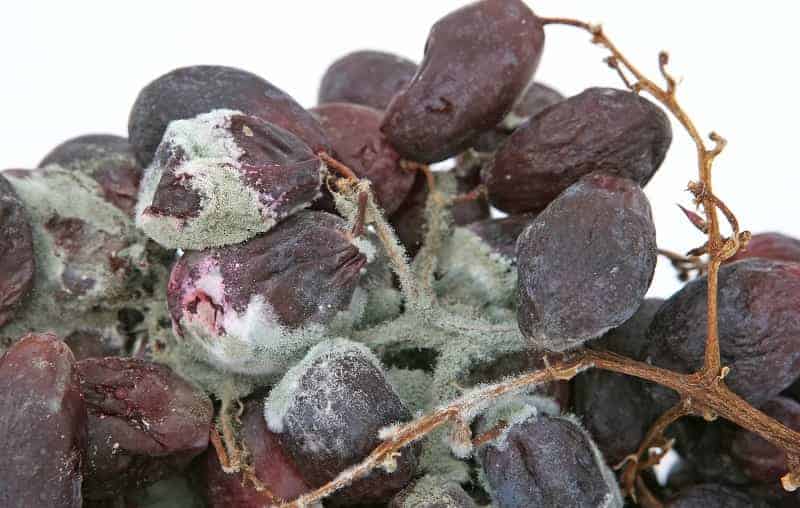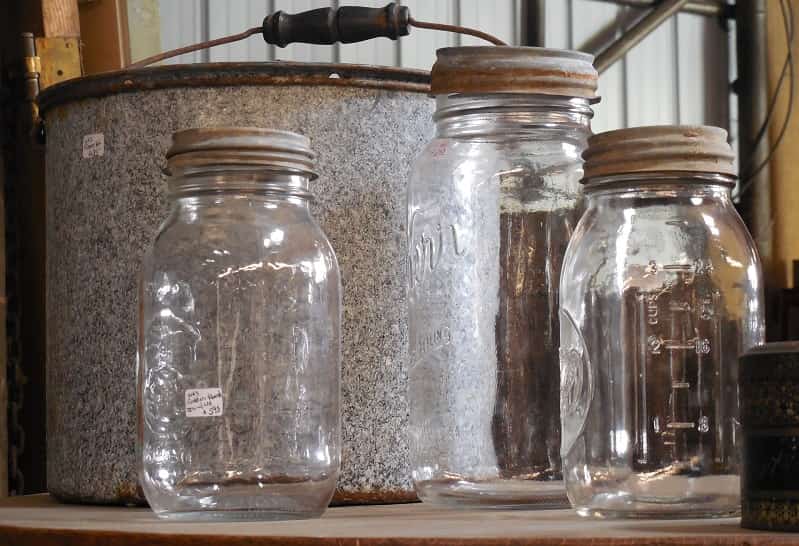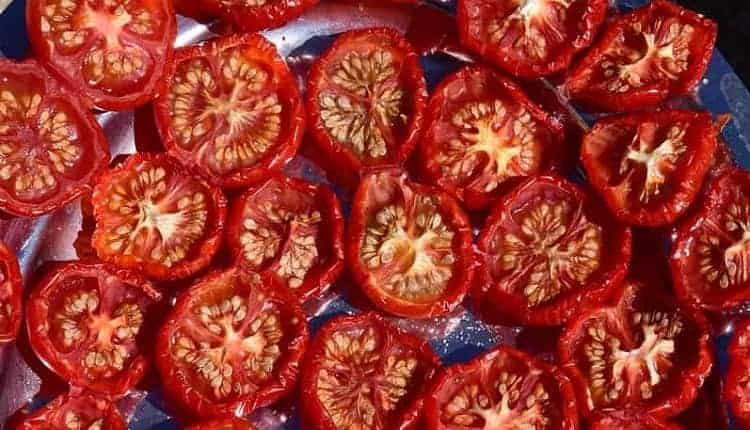Survival Food Preservation: How To Preserve Food For Long Term Storage
Author: Diane Vuković
Last Updated: October 21, 2022
[*]
Our grandparents used to spend their weekend’s canning veggies from their garden, smoking meat (often from game they caught themselves), and making real pickles.
Today, we have mostly lost this knowledge.
Even in the era of mega supermarkets, there are a lot of reasons to learn how to preserve food:
Food preservation can initially seem overwhelming with so many different methods and techniques.
This guide is meant to help you get started with DIY food preservation so you can choose the proper methods for your goals.
Table Of Contents [&utm_campaign=Food+Preservation+Guide&vgo_ee=GSDDXPqt%2B2l868arHrG7ZKyPUFd7JHyq9acdSgULWaM%3D#]show]

Before you can learn about food preservation methods, you have to understand why food spoils in the first place.
Five main factors will cause food spoilage:
As these feed off of the food, they produce waste products. These wastes are what give spoiled food a foul smell.
Read: Is it safe to eat spoiled food after cooking it?
For most microorganisms to survive, they need oxygen and water.
Many food preservation methods work by limiting oxygen (such as vacuum packing) and water (such as dehydrating).
Note: Some bacteria do not require oxygen to grow (anaerobic bacteria). One of these is the infamous bacteria Clostridium botulinum, which is responsible for causing botulism.
Until canning techniques were improved, botulism poisoning was common.
Thus, foods must be heated adequately to kill botulism bacteria during the canning process. Most microorganisms reproduce best in warm environments.
Refrigerating or freezing food is a good way to slow micro-organisms’ growth and keep the food fresh for longer.
Refrigerating and freezing won’t kill microorganisms, though; they will reactivate once at a higher temperature.
See, Does freezing kill bacteria in food?
Many enzymes are responsible for the ripening of fruits, so a green tomato can turn red even after it has been picked.
In the presence of oxygen and moisture, enzymes will eventually cause food to spoil.
The good thing is that enzymes can easily be destroyed by heat. Food preservation methods using heat prevent enzymes from causing food spoilage.
Methods that limit air and water will prevent enzymes from working.
However, oxygen also causes foods to break down through oxidation.
Foods high in fats and fatty acids are particularly susceptible to oxidation.
Short-chain carbon compounds are formed when the fats come in contact with oxygen. These compounds have very acidic odors and a fishy smell.
Bear in mind that lots of foods have a high fatty acid content.
For example, brown rice spoils much faster than white rice because of its healthy oils.
For example, a common problem with food stored in Mylar bags is that rats can chew through them. Viruses from the rats’ mouths can then get into the food.
Since the bag is destroyed, the food is now exposed to air, and microorganisms will grow.
Thus, it is crucial for long-term food preservation to choose quality food storage containers.
Even if your food is entirely free of moisture and oxygen, it can still be damaged if exposed to light through photodegradation. Some foods, such as fats, proteins, and vitamins, are much more sensitive to photodegradation.
Exposure to light doesn’t necessarily mean the food will be unsafe to eat. However, the food can become discolored and lose much of its vitamin value.
The best food preservation methods will protect against multiple causes. No plan is perfect, though, so practices are often combined.
The methods of food preservation can be broken down by:
Examples include:
Keeping microorganisms at a cool temperature reduces how quickly they replicate, and food lasts longer.
Examples include:
There are healthier, natural ways to do chemical preservation at home.
Examples include:
Examples include:
It is best to combine multiple methods to provide better protection against spoilage.
However, from a “survivalist’s” perspective, we can rule out some methods. Freezing, for example, is susceptible to power outages unless you have a solar freezer.
We’ve chosen to focus on the most popular at-home food preservation methods for these reasons.
It is best to learn several of these, so you have multiple ways to preserve food.

When you go to the supermarket, you find canned foods.
The history of canned foods goes back to the 18th century when Emperor Napoleon of France was worried about keeping his soldiers fed.
Since then, many farmers and homesteaders have stored their crops for the winter by canning.
Once canned, foods can last for more than 5 years.
Heat is applied to the food in the clean, sealed jar. The heat kills microorganisms that would cause spoilage and removes air to create a seal.
You can buy special water bath canners (Amazon Link), but you can also use a large cooking pot with a tight-fitting lid.


The sterilized food jars are submerged in boiling water and cooked for a shorter time at lower temperatures.
This method is suitable for acidic foods such as:
Read our guide to water bath canning.
Read our guide to pressure canning.
Compared to the water bath method, the jars are cooked at a much higher temperature of 240 degrees F.
Pressure canners have special lids that trap the steam, which allows them to get up to this temperature. A vent in the lid releases pressure.

Sponsored by Merz North America, Inc.


Recommended pressure canner on Amazon.
You’ll also need a special can sealer or seamer.
Until recently, these machines were too pricey for home use. However, prices have decreased drastically, so this is becoming a more affordable option.
Shelf Life: 1 to 5 years

Dehydrating preserves food by removing the water from it. Without water, microorganisms and enzymes aren’t able to cause food spoilage.
When combined with vacuum-packing to remove oxygen, dehydration is a great way to preserve food.
On their own, though, dehydrated foods will only last for about a year.
Insect larva loves dried fruits, too, and if you aren’t careful about how you package them, you’ll find insects in your food.
NOTE: Special care needs to be taken with drying meats to make jerky. Meat needs to reach a sufficient temperature to kill bacteria like salmonella.
Home dehydrators are great for people starting with food preservation.
Recommended Reading: Best Food Dehydrators Reviewed
However, they have the serious drawback of not being able to hold much food at once. You’ll need to build a solar dehydrator if you want to dry larger amounts of food without relying on huge amounts of electricity.
For step-by-step instructions and plans, check out the book The Solar Food Dryer: How to Make and Use Your Own Low-Cost, High Performance, Sun-Powered Food Dehydrator. (Amazon Link)
More Here: https://www.primalsurvivor.net/food-preservation-survivalists-guide/?utm_source=ActiveCampaign&utm_medium=email&utm_content=Food+Preservation+-+A+Survivalist+s+Guide+%5Bin-depth%5D&utm_campaign=Food+Preservation+Guide&vgo_ee=GSDDXPqt%2B2l868arHrG7ZKyPUFd7JHyq9acdSgULWaM%3D
Thanks to: https://www.primalsurvivor.net
Author: Diane Vuković
Last Updated: October 21, 2022
[*]
Our grandparents used to spend their weekend’s canning veggies from their garden, smoking meat (often from game they caught themselves), and making real pickles.
Today, we have mostly lost this knowledge.
Even in the era of mega supermarkets, there are a lot of reasons to learn how to preserve food:
- You want to stockpile emergency food for disaster preparedness.
- You are homesteading and want to keep your surplus.
- You want food without additives and preservatives.
- You can buy food in bulk when it is cheap to save money.
- Or simply because of the tremendous personal satisfaction which comes with learning old skills and becoming more self-sufficient.
Food preservation can initially seem overwhelming with so many different methods and techniques.
This guide is meant to help you get started with DIY food preservation so you can choose the proper methods for your goals.
Table Of Contents [&utm_campaign=Food+Preservation+Guide&vgo_ee=GSDDXPqt%2B2l868arHrG7ZKyPUFd7JHyq9acdSgULWaM%3D#]show]
What Causes Food to Spoil?

Before you can learn about food preservation methods, you have to understand why food spoils in the first place.
Five main factors will cause food spoilage:
- Microorganisms
- Enzymes
- Oxygen
- Pests
- Light
1. Microorganisms
Microorganisms refer to all bacteria, yeast, and molds that can grow in food.As these feed off of the food, they produce waste products. These wastes are what give spoiled food a foul smell.
Read: Is it safe to eat spoiled food after cooking it?
For most microorganisms to survive, they need oxygen and water.
Many food preservation methods work by limiting oxygen (such as vacuum packing) and water (such as dehydrating).
Note: Some bacteria do not require oxygen to grow (anaerobic bacteria). One of these is the infamous bacteria Clostridium botulinum, which is responsible for causing botulism.
Until canning techniques were improved, botulism poisoning was common.
Thus, foods must be heated adequately to kill botulism bacteria during the canning process. Most microorganisms reproduce best in warm environments.
Refrigerating or freezing food is a good way to slow micro-organisms’ growth and keep the food fresh for longer.
Refrigerating and freezing won’t kill microorganisms, though; they will reactivate once at a higher temperature.
See, Does freezing kill bacteria in food?
2. Enzymes
Enzymes are natural chemicals found in foods.Many enzymes are responsible for the ripening of fruits, so a green tomato can turn red even after it has been picked.
In the presence of oxygen and moisture, enzymes will eventually cause food to spoil.
The good thing is that enzymes can easily be destroyed by heat. Food preservation methods using heat prevent enzymes from causing food spoilage.
Methods that limit air and water will prevent enzymes from working.
3. Oxygen
Oxygen is crucial for most microorganisms to survive and reproduce and is also essential for enzyme reactions, so limiting oxygen will preserve foods in these ways.However, oxygen also causes foods to break down through oxidation.
Foods high in fats and fatty acids are particularly susceptible to oxidation.
Short-chain carbon compounds are formed when the fats come in contact with oxygen. These compounds have very acidic odors and a fishy smell.
Bear in mind that lots of foods have a high fatty acid content.
For example, brown rice spoils much faster than white rice because of its healthy oils.
4. Pests
Pests don’t necessarily cause food spoilage. However, they can get into your food supplies and cause contamination.For example, a common problem with food stored in Mylar bags is that rats can chew through them. Viruses from the rats’ mouths can then get into the food.
Since the bag is destroyed, the food is now exposed to air, and microorganisms will grow.
Thus, it is crucial for long-term food preservation to choose quality food storage containers.
5. Light
This is one aspect that a lot of people forget about.Even if your food is entirely free of moisture and oxygen, it can still be damaged if exposed to light through photodegradation. Some foods, such as fats, proteins, and vitamins, are much more sensitive to photodegradation.
Exposure to light doesn’t necessarily mean the food will be unsafe to eat. However, the food can become discolored and lose much of its vitamin value.
Ways to Preserve Food
To preserve food, you must inhibit the five causes of food spoilage.The best food preservation methods will protect against multiple causes. No plan is perfect, though, so practices are often combined.
The methods of food preservation can be broken down by:
1. Heat Preservation Methods
Heat kills microorganisms and enzymes, which leads to spoilage. Heat also removes the moisture that they would thrive on.Examples include:
Canning
Dehydration
Pasteurization
Evaporation
Sun-drying
Smoking
2. Cold Preservation Methods
Most bacteria thrive in what the USDA calls the “Danger zone” of 40 °F and 140 °F (4.4°C- 60°C)Keeping microorganisms at a cool temperature reduces how quickly they replicate, and food lasts longer.
Examples include:
Refrigeration
Freezing
Root cellaring
3. Chemical Methods
Many of the store-bought foods we eat are preserved with chemicals like Benzoates and nitrates.There are healthier, natural ways to do chemical preservation at home.
Examples include:
Vinegar pickling
Lactic acid fermentation
Salt curing
Sugar curing
4. Mechanical Methods
These food preservation methods prevent enzyme reactions from occurring and microorganism spoilage. They are usually unsuitable for long-term food storage.Examples include:
Vacuum sealing
Oxygen absorbers
Filtration and clarification
Oil and paraffin
Methods of At-Home Food Preservation
There is no one “best’ food preservation method to use.It is best to combine multiple methods to provide better protection against spoilage.
However, from a “survivalist’s” perspective, we can rule out some methods. Freezing, for example, is susceptible to power outages unless you have a solar freezer.
We’ve chosen to focus on the most popular at-home food preservation methods for these reasons.
It is best to learn several of these, so you have multiple ways to preserve food.
Canning

When you go to the supermarket, you find canned foods.
The history of canned foods goes back to the 18th century when Emperor Napoleon of France was worried about keeping his soldiers fed.
Since then, many farmers and homesteaders have stored their crops for the winter by canning.
Once canned, foods can last for more than 5 years.
Methods of Canning
There are several methods of canning. They all rely on ensuring the canning jars are sterilized, and the lids are sealed.Heat is applied to the food in the clean, sealed jar. The heat kills microorganisms that would cause spoilage and removes air to create a seal.
Water Bath Canning Method
This is the easiest at-home canning method.You can buy special water bath canners (Amazon Link), but you can also use a large cooking pot with a tight-fitting lid.


The sterilized food jars are submerged in boiling water and cooked for a shorter time at lower temperatures.
This method is suitable for acidic foods such as:
Fruits
Juices
Jams
Salsas
Pickles
Condiments
Read our guide to water bath canning.
Pressure Canning Method
This is the safest method for preserving meats and other low-acid foods (including many vegetables).Read our guide to pressure canning.
Compared to the water bath method, the jars are cooked at a much higher temperature of 240 degrees F.
Pressure canners have special lids that trap the steam, which allows them to get up to this temperature. A vent in the lid releases pressure.

Sponsored by Merz North America, Inc.
$50 Off on sign up
Get exclusive access to bold new benefits with Xperience+. Earn $50 when you sign up

Recommended pressure canner on Amazon.
Canning in Metal Cans
If you want to preserve foods in a metal can, you’ll need a commercial-grade canning machine that can be used with metal cans.You’ll also need a special can sealer or seamer.
Until recently, these machines were too pricey for home use. However, prices have decreased drastically, so this is becoming a more affordable option.
Key Takeaways – Canning
Best For: Fresh produceShelf Life: 1 to 5 years
Good for smaller quantities
Good for garden surplus
Glass jars can break easily
Metal canning machines are pricey
Food quality decreases quickly
Dehydrating

Dehydrating preserves food by removing the water from it. Without water, microorganisms and enzymes aren’t able to cause food spoilage.
When combined with vacuum-packing to remove oxygen, dehydration is a great way to preserve food.
On their own, though, dehydrated foods will only last for about a year.
Insect larva loves dried fruits, too, and if you aren’t careful about how you package them, you’ll find insects in your food.
NOTE: Special care needs to be taken with drying meats to make jerky. Meat needs to reach a sufficient temperature to kill bacteria like salmonella.
Home dehydrators are great for people starting with food preservation.
Recommended Reading: Best Food Dehydrators Reviewed
However, they have the serious drawback of not being able to hold much food at once. You’ll need to build a solar dehydrator if you want to dry larger amounts of food without relying on huge amounts of electricity.
For step-by-step instructions and plans, check out the book The Solar Food Dryer: How to Make and Use Your Own Low-Cost, High Performance, Sun-Powered Food Dehydrator. (Amazon Link)
More Here: https://www.primalsurvivor.net/food-preservation-survivalists-guide/?utm_source=ActiveCampaign&utm_medium=email&utm_content=Food+Preservation+-+A+Survivalist+s+Guide+%5Bin-depth%5D&utm_campaign=Food+Preservation+Guide&vgo_ee=GSDDXPqt%2B2l868arHrG7ZKyPUFd7JHyq9acdSgULWaM%3D
Thanks to: https://www.primalsurvivor.net






 Sat Mar 23, 2024 11:33 pm by globalturbo
Sat Mar 23, 2024 11:33 pm by globalturbo

